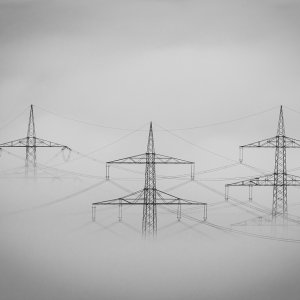How the Energy Reform Will Reshape CRE

STORY INLINE POST
Q: How will the Energy Reform help Mexico to meet its growing electricity demand in the future?
A: Mexico’s power generation capacity will not be increased only by opening the market to the private sector. The reason why the approved Energy Reform is ideal is because it modifies the entire sector. For example, shale gas resources in northeastern Mexico will generate jobs and attract new investment once development is underway. The Energy Reform detonates productivity, which will have a positive impact on other sectors and will attract investment. When planning energy demand, it is important to take into consideration the country’s economic growth. With this reform, the country’s GDP will increase by two or three percentage points. Obviously this will be reflected in energy demand, and when demand is growing, power generation has to increase. If the Energy Reform had only focused on hydrocarbons without involving the electricity sector, there would have been a problem. Industrial growth would have been fostered, but we would not have had an efficient way to guarantee electricity supply. When the electricity market is restructured, it sends a message that markets are opening and are becoming attractive for investment.
Q: How will the implementation of the Energy Reform affect CRE?
A: With the Energy Reform, we will have to wait and see how the new legal and political framework will work out. We are expecting to take over all hydrocarbons regulation matters concerning pipeline transportation. One of the most important modifications made by the reform is to have all transportation of hydrocarbon products by pipeline come under CRE regulation. Future electricity market regulation will also be the responsibility of CRE. The market will no longer be ruled through bilateral contracts, and there will be increased access to the market. We will also strengthen the legal framework for the natural gas sector. Right now, that might seem like a smaller issue, but it is only a matter of time before it becomes very important.
Q: How can CRE act as a communication facilitator between public and private players in project development?
A: More than facilitating communication, we are an authority in the sector that works transparently and applies the power provided by law. CRE needs to have a more proactive role in promoting the sector and, as regulator, it will have to translate legal certainties in specific actions. One example is the energy transportation methodology, which was adapted from international methodologies to the Mexican sector, but the truth is that it does not work. We need a more transparent, dynamic methodology in which every player can go online into the transmission company or independent operator’s website, provide the node where it will connect, the amount of energy it will add to the grid, and know how much the wheeling will cost. We, as regulators, have the responsibility of making this possible. We have to promote conditions that show legal certainty so that investors become aware it is safe to invest in the Mexican electricity sector.
Q: What will be the role of off-takers in electricity generation following these changes?
A: On one hand, Mexico has the goal of generating 35% of its electricity from clean sources by 2024. We have to comply with this mandate and renewable energy project developers are aware of this. On the other hand, there are consumers and socially responsible companies that are interested in covering their energy requirements with clean energy. For renewables, the federal government has to integrate externalities into the regulatory framework governing supply, which will be reflected in electricity prices, making renewable energies more attractive to all market participants. The small power producer scheme is mainly focused on conventional energy generation, but there is something that has to be taken into consideration since investors find it very attractive to use this scheme because Mexico’s natural gas supply is still limited. When there is no natural gas, energy has to be generated with other more expensive sources and the short-term marginal cost increases, opening an opportunity for small power producers. However, when the Los Ramones pipeline begins operating and Mexico has the capacity to import cheap natural gas from the US or when we begin extracting nonconventional gas, electricity prices will go down and so will the short-term marginal cost. Nowadays, the small power producer scheme is still very attractive, but that situation might change in the near future.





















